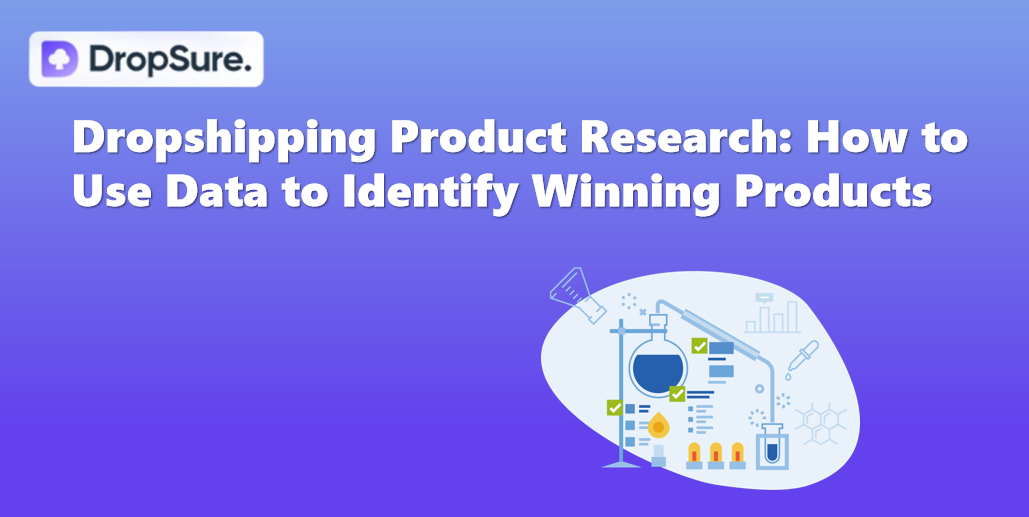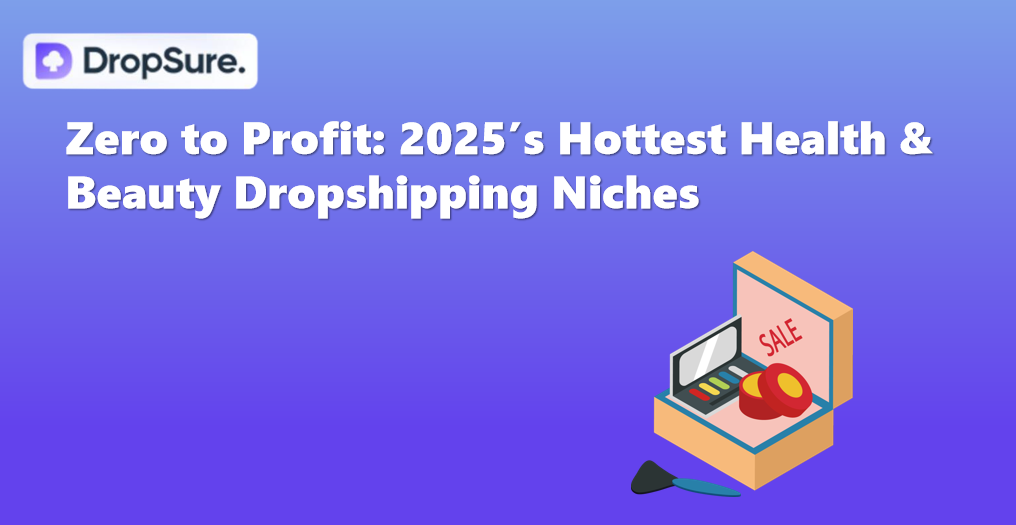Why Is Stuff on Temu So Cheap? Sure, some products are cheap because the quality isn’t the best—but that’s not the whole story. There are a few key reasons behind the low prices: aggressive discounts, tax advantages, and even direct sourcing from factories by the platform itself.
But don’t get it twisted—Temu isn’t the only place to find affordable products. And cheap doesn’t always mean bad. Tools like Dropship.IO can help you discover budget-friendly products with solid quality. Right now, you can even try it for free for 7 days—perfect for finding your next best-seller if you’re running a dropshipping store!
So, why is Temu so cheap? It comes down to three main reasons:
● Some of the products really are lower quality
● The platform uses loss-leader pricing to drive traffic
● It’s a highly digitized operation, which cuts out a lot of middle costs
By the way—Temu itself isn’t a seller. It’s a marketplace, and the actual products come from third-party merchants.
In this article, we’ll break down exactly why Temu’s products are so cheap—and cover a few big questions:
● Is Temu a good option for dropshipping?
● How do you connect Temu to Shopify?
● What are the risks of using Temu for dropshipping?
Why Are Temu Products So Cheap?
Direct Sourcing from Factories
One major reason Temu can offer such low prices is because it sources directly from suppliers and factories—cutting out all the middlemen who would normally mark up the prices.
Think of it like skipping the wholesale market and going straight to the assembly line—you’re bound to get better deals.
Compared to that, while many sellers on AliExpress are manufacturers themselves, they still tend to price things closer to retail. And on platforms like Amazon, a lot of the sellers are either dropshippers or wholesalers, so they’ll add another layer of profit on top of the product cost.
Temu plays a hybrid game—it borrows from both the Amazon and AliExpress business models. It buys directly from factories, adds a small profit margin, and sells to you through its own platform. That’s the core reason it can keep prices so low.
Selling at a Loss on Purpose
Let’s not forget—Temu started as a totally unknown platform. Competing with big names like AliExpress or Alibaba wasn’t going to happen just by running some ads.
So they went hard: selling products at a loss.
Yep, they were literally losing money on each order, just to get users to try their platform.
This is what’s called loss-leader pricing—it’s not about making money right away. It’s about getting attention, building user trust, and grabbing market share fast. Once they’ve got a loyal customer base and better brand awareness, then they can start profiting.
There are a few strategic benefits to this approach:
● Attracting a flood of new users
● Boosting traffic on the platform
● Building strong word-of-mouth
● Demonstrating platform value
● Increasing exposure and brand recognition
Sounds familiar? Yeah—it’s something a lot of dropshippers wish they could do. But here’s the thing: most of us don’t have the budget to bleed money like that.
Temu can afford to burn cash—because they’ve got serious investors backing them.
The “Tax-Free Advantage”—Now Gone
Another reason Temu used to be super cheap? A tax loophole.
For a long time, products shipped to the U.S. under $800 in total value were exempt from import tax.
That meant as long as Temu kept orders under that threshold, they didn’t have to pay any customs duties—saving a ton of money.
But in February 2025, that advantage disappeared—thanks to the Trump administration shutting down the policy.
Why? Pretty straightforward:
● The U.S. doesn’t want Chinese products flooding the market
● They want to close tax loopholes big companies were abusing
● And they want to push “Made in USA” over imported goods
Now, Temu has to pay the same import taxes as everyone else.
Sure, they might keep the low prices alive for a while by still taking losses—but let’s be honest:
this model isn’t sustainable forever.
Personally? I don’t think Temu will be able to keep undercutting AliExpress or Shein long-term.
It’s only a matter of time before prices start to level out.
Tons of Knockoffs = Naturally Cheap
Let’s be real—a lot of the stuff on Temu are “lookalikes”, aka knockoffs.
● They imitate the look and functionality of branded products pretty closely
● As for quality… well, let’s just say “it works, but don’t expect guarantees”
In simple terms, to keep costs down and grab market share, many sellers use cheaper materials and copycat designs to create ultra-low-cost alternatives.
But here’s the thing: it’s not all bad.
Not everyone can afford the real deal. For a lot of people, “it looks similar and works okay” is good enough.
Now, Temu doesn’t make these knockoffs themselves. But they do act as a bridge between factories and buyers.
Without Temu, many of these low-budget factories deep inside China would never be able to export anything.
To put it bluntly—Temu gave these “mountain factory knockoffs” a way to reach the world.
Low Wages = Low Prices
Let’s talk about something brutally real: cheap labor.
The average annual salary in China is around $50,000—sounds decent, right?
But that number includes tech giants and white-collar workers in big coastal cities.
Factory workers? The real average annual wage is only $8,111—that’s less than $25 a day.
Now compare that to fast food workers in the U.S., who make around $10–$20 per hour.
Work 8 hours? That’s $80 to $160 per day. The cost difference is massive.
So of course the production cost isn’t the same between China and the U.S.
That’s exactly why the world still depends on “Made in China.”
From smartphones, laptops, TVs, to power banks and mini fans—most of the components come from Chinese factories.
Temu basically brought this global manufacturing powerhouse right to the front door of U.S. consumers.
No wonder it’s so cheap.
Temu Runs on Pure Digital Power
Temu is a lightweight digital platform through and through.
No physical stores. No warehouses. No inventory of its own. Everything’s handled by the sellers.
Think of it like this: Temu doesn’t touch the products—only the traffic and the orders.
Their job? Drive eyeballs, take commissions, and pass the rest to sellers.
Once you place an order, Temu just pings the seller to ship it out—and then they take a cut.
Sounds a bit like Etsy, right?
Now contrast that with Amazon’s “heavy” model—aka FBA (Fulfillment by Amazon):
● Sellers have to ship inventory to Amazon warehouses
● Amazon handles storage, packing, delivery, and even returns
This FBA setup is powerful, but insanely expensive.
Amazon spends billions of dollars a year just on logistics and storage.
Temu? No warehouses. No stockpiles. No handling.
Of course their overhead is way lower.
To see Temu clearly: it’s basically a giant digital shell, dressed as a cross-border e-commerce platform.
It offloads all the heavy-lifting—warehousing, logistics, labor—to other players.
Temu focuses on tech, website, traffic, and ruthless price control.
In short: light as a feather, fast like crazy.
Almost No Human Support—Robots Run the Show
Let’s talk about another major cost-saving play from Temu: they barely have any human customer service.
Got a problem on Temu?
Don’t expect to speak to a real human anytime soon.
Most of the time:
● You’ll be chatting with a bot
● Or they’ll just throw a FAQ link at you
You might ask:
“How can such a massive platform get away with almost no support staff?”
Well… Temu can—and they do.
They rely heavily on automation and AI to solve 99% of customer issues.
Only the rarest edge cases go to an actual human—and even that’s hard to reach.
This isn’t laziness—it’s deliberate cost control.
Hiring people is expensive—especially when you’re running a global, multi-language operation.
And here’s the underrated truth:
Customer service is a money pit.
Every language you support means hiring more people, managing more teams, handling more complexity.
Temu? They just slashed that whole department and replaced it with scripts and automation.
Is Shopping on Temu Safe?
Yes, shopping on Temu is safe. It’s just like other e-commerce platforms and is actually a major competitor to AliExpress. If you use Temu regularly, you’ll notice most products on Temu can also be found on AliExpress.
Many Westerners worry about safety on Temu. But it’s less about financial security and more about politics. Some think the Chinese Communist Party might be using Temu’s data for political spying.
Is that true? Who knows?
From a security standpoint, your financial information is unlikely to be hacked. Temu, as a big corporate group, definitely takes precautions to protect consumer data.
Most products on Amazon actually come from Temu, AliExpress, or Alibaba. If you go directly to Temu, you can get cheaper deals.
But here are some things you need to watch out for when buying from Temu:
● Counterfeit products — Many customers report that Temu is flooded with unbranded items. These products often don’t meet international quality standards and may pose serious risks to users.
● Counterfeit products — Many suppliers on Temu offer fake goods. The problem is, once these goods hit customs, governments might seize them, and your customers may never receive their orders.
● Illegal products — You’ll find some illegal items containing banned substances on Temu. Some of these are food supplements that may contain addictive ingredients.
Given these challenges, my advice is to be cautious. For example, don’t dropship counterfeit items. It doesn’t matter whether they come from Temu or elsewhere—counterfeits are illegal.
If you see a bag with a Louis Vuitton logo, stay far away. If you spot shoes with a Nike swoosh, don’t buy them. Avoid dropshipping food supplements, vitamins, and the like—these carry huge risks and aren’t worth selling.
If you decide to source from Temu, focus on regular items like coffee mugs, costume jewelry, toys, etc. I also suggest steering clear of super cheap electronics. These can be fire hazards or cause accidents.
When browsing Temu’s products, always consider customs policies, customer safety, and compliance. If you have any doubts about a product, just drop it.
As for quality, remember: you get what you pay for. Cheap products are cheap for a reason—usually shoddy workmanship. You can’t tell customers your product is low quality but still charge high prices.
The trick is not to price too high. Consumers know cheap stuff isn’t great quality. As long as your price isn’t ridiculously high, they won’t complain.
Is Temu Suitable for Dropshippers?
Yes, Temu is very suitable for dropshippers, but there are some things to keep in mind. On Temu, you can find products at extremely affordable prices.
Some people say there’s no point in dropshipping from Temu because Temu spends heavily on advertising. Since millions of people already know Temu, why would you want to dropship their products?
Trust Issues
Many people don’t trust Temu. Their prices sound too good to be true, so people hesitate. But you can take some small risks. Order products from Temu and find reliable suppliers.
Once you have a list of products and suppliers you can work with, you can import these products into your own store. People will buy from you because they trust you, not knowing you’re actually buying from Temu.
Product Pricing
Temu’s prices are unbelievably low. That’s exactly why you have the chance to make huge profits.
Product Selection
Temu is working hard to become the next AliExpress. We don’t yet know exactly how many products Temu offers, but it’s definitely keeping pace with AliExpress.
The main product categories on Temu include:
● Automotive
● Sports
● Jewelry
● Fashion & Apparel
● Home & Kitchen
● Toys
● Hardware
● Beauty & Health
…and more. I can say Temu covers almost all the popular dropshipping niches. You can easily find products to sell and make a profit.
Consumer Protection
Temu offers up to 90 days for refunds or returns. Considering that shipping times can sometimes be long, this service is quite thoughtful.
However, you must know some details. Each order can only be returned once.
Free returns mean you don’t have to pay the shipping cost to send the item back to Temu. If your order has ten items and you want to return two, you must put those two items in one package and send them back to Temu for free.
All in all, my advice is to be cautious with Temu. Don’t sell Temu products unless you’ve tried them yourself. Yes, you do have to spend money, but it’s worth it. The good news is, these products are very cheap—you can buy a lot with just a few hundred dollars.
Is Temu Suitable for Dropshippers?
Yes, Temu is very suitable for dropshippers, but there are some things to watch out for. On Temu, you can find products at extremely affordable prices.
Some people say there’s no point in dropshipping from Temu because Temu spends huge amounts on advertising. Since millions of people already know Temu, why would you want to dropship their products?
Trust Issues
Many people don’t trust Temu. Their prices sound too good to be true, so people hesitate. However, you can take some small risks. Order products from Temu and find reliable suppliers.
Once you have a list of products and suppliers you can work with, you can import these products into your own store. People will buy from you because they trust you, not knowing that you’re actually buying these products from Temu.
Product Pricing
Temu’s prices are unbelievably low. That’s exactly why you have the chance to make huge profits.
Product Selection
Temu is working hard to become the next AliExpress. We don’t yet know exactly how many products Temu has, but it’s definitely keeping pace with AliExpress.
The main product categories on Temu include:
● Automotive
● Sports
● Jewelry
● Fashion & Apparel
● Home & Kitchen
● Toys
● Hardware
● Beauty & Health
…and more. I can say Temu covers almost all the popular dropshipping niches. You can easily find products to sell and make a profit.
Consumer Protection
Temu offers up to 90 days for refunds or returns. Considering that shipping times can sometimes be long, this service is very thoughtful.
However, you need to know some rules. Each order can only be returned once.
Free returns mean you don’t have to pay the shipping cost to send the item back to Temu. If your order has ten items and you want to return two, you must pack those two items into one box and send them back to Temu for free.
In summary, my advice is to be cautious with Temu. Don’t sell Temu products unless you’ve tried them yourself. Yes, you do have to spend money, but it’s worth it. The good news is, these products are very cheap—you can buy a lot with just a few hundred dollars.
Can You Integrate Temu with Shopify?
No, you cannot directly integrate Temu with Shopify. Temu does not offer any integration apps. There is a workaround—you need to use DropSure.
It’s similar to AliExpress, but designed specifically for dropshippers. Anyone can buy products from DropSure, even if they are not dropshippers.

 16 min read
16 min read








